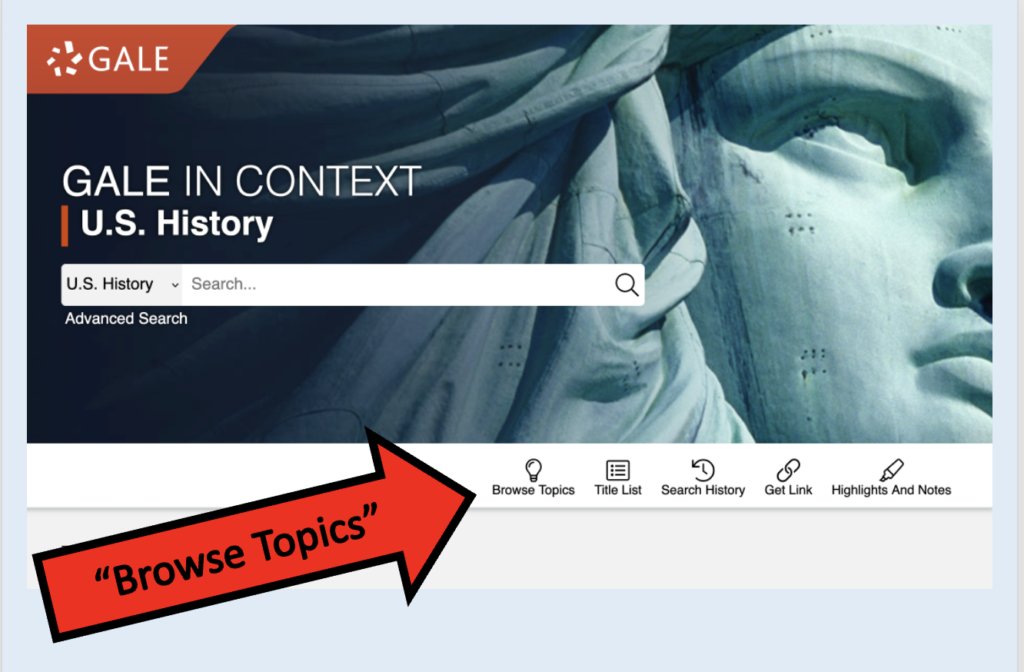A reference source is typically a SHORT OVERVIEW of a topic. Here’s why it is useful at the beginning of a research project:
- It might be only a definition, a few paragraphs or a few pages long. So it’s fast to read.
- It highlights subtopics, concepts, time periods, people, questions and examples that connect to your topic with keywords that are useful in search engines.
- Based on #2, a researcher who is formulating their broad questions for their project will have hints about where they could take their inquiry forward for more depth. They can choose the subtopics most interesting to pursue.
- Many reference sources “refer” the researcher to excellent sources of information in their bibliographies or “for further reading…” sections. These are often primary sources that can be challenging to locate otherwise.
- Databases might even provide hyperlinks to such sources.
- Students who are testing out a topic in the first week of a project can quickly tell if there is much that will hold their interest (without having to read something more lengthy.)
- If a researcher can’t find many reference articles about their topic, it might be a hint to choose a more expansive topic for research.

Where do you find reference articles?
- Browse the library’s shelves for specialized encyclopedias in the correct section of the Dewey Decimal System. They stand out in H-B’s library with the orange R stickers. They have call numbers in the catalog that begin with R.
- Note: Some of the best reference sources are ONLY found in print; they are copyrighted and haven’t been made available digitally. Tell the librarian your topic and see if she has the PERFECT reference source for you on the shelves.
- Search inside these library databases: Gale is one of the largest publishers of reference sources on the planet. So you’ll be amazed by why you find in the Gale databases and The Gale Virtual Reference Library. Use also: Oxford Art, Oxford Music, Salem History. (Almost all of our databases make the reference articles stand out in their own category.)
- Gale databases include an option to “Browse Topics” at their homescreen. Each topic listed has many reference articles (and other resources) curated for that topic.

- We don’t use these as much in high school: General encyclopedias like World Book Advanced and Britannica… because they may not be as detailed as a specialized encyclopedia, but they help our younger students.
- Wikipedia is a reference source– just not usually as strong and reliable as professionally produced and expensive reference sources in libraries. So students don’t cite Wikipedia in projects at H-B or in college. It is an open-source project with people (including non-experts) editing its pages, so the information may not be accurate; Wikipedia is open to mischief. But the bibliography for each article refers the reader to sources that might be useful if critically evaluated.
How to use:

Many of the best reference sources originally appeared in multi-volume sets on shelves of libraries before they were scanned into databases. (That’s why their citation may include a volume number, year, or page number.)
The index for a set of reference sources is usually in the last book of the set. If you look up your topic and it could provide a code like this:
IV: 256-257
…it is telling you to go to page 256- 257 of the fourth volume.
In some cases, the index lists no volume number, but the page reference is a very large number like 1399. In those cases, each successive volume starts with the page number that left off in the previous volume. Page 1399 might be in volume 6 or 7.
An index might make bold or in italics the page numbers where there’s a valuable map, timeline, photo or illustration.

Databases contain many resources that were originally published in print such as periodicals, reference articles or books.
 Contact
Contact  Calendars
Calendars Careers
Careers Engage
Engage  District
District
